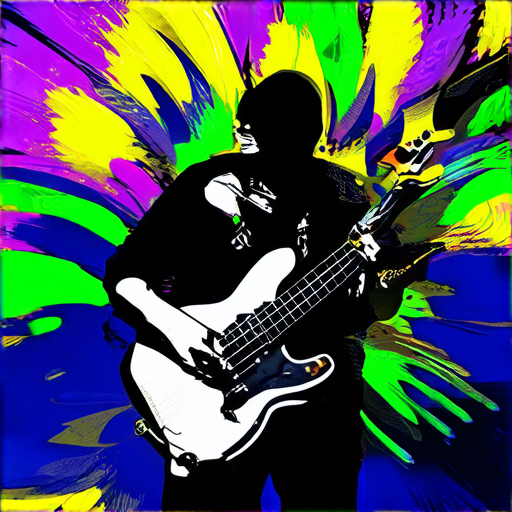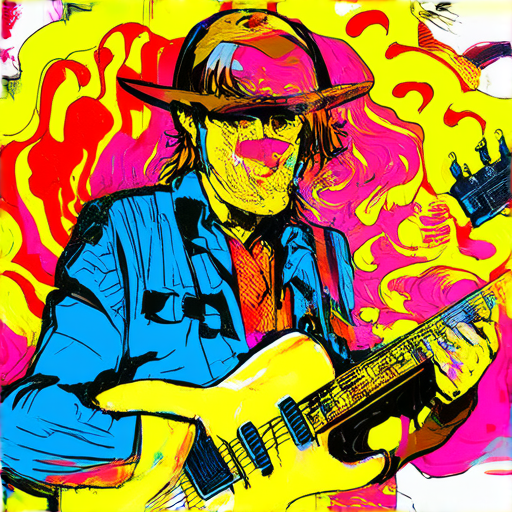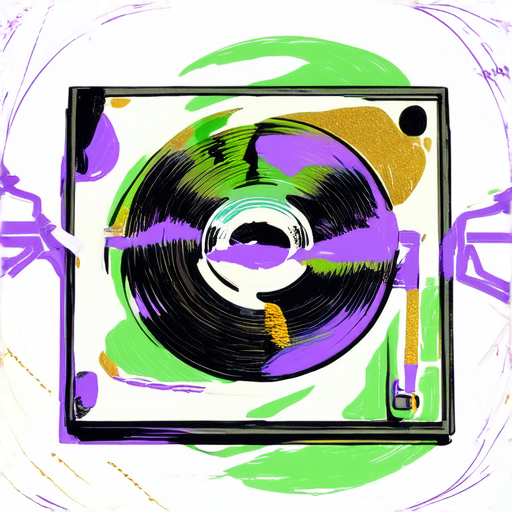For those who crave the infectious energy and soulful rhythms of funk music, mastering its intricacies can seem like a daunting task. However, with the right guidance and resources, unlocking the groove has never been easier. In recent years, the rise of funk music online courses has democratized access to expert instruction, allowing aspiring musicians to hone their skills and develop a deeper understanding of this iconic genre.

The Key Instrument in Funk Music
Funk music is characterized by its strong emphasis on rhythm and groove, which is often driven by the bass guitar.
- The bass guitar plays a crucial role in funk music, providing the foundation and pulse of the rhythm section.
- In funk music, the bass guitar typically plays a prominent melodic role, often taking center stage alongside the drums and keyboards.
- The use of syncopated rhythms and complex polyrhythms in funk music relies heavily on the bass guitar’s ability to provide a solid rhythmic foundation.
- The bass guitar’s versatility allows it to play both melodic and harmonic roles, making it an essential instrument in funk music.
Bass Guitar Techniques in Funk Music
Funk musicians employ various techniques to create the distinctive sound and feel of funk music on the bass guitar.
- Slapping and popping: This technique involves slapping the strings with the thumb and popping them with the fingers to create a percussive sound.
- Thumb playing: Using the thumb to pluck the strings creates a smooth, legato sound that is characteristic of funk music.
- Walking bass: A walking bass line is a type of bass line that moves in a steady, stepwise motion, often used in funk music to create a sense of forward momentum.
- Effects processing: Funk musicians often use effects processors to enhance the sound of the bass guitar, adding distortion, reverb, and other textures to the sound.
The Role of the Bass Guitar in Modern Funk Music
The bass guitar remains a vital component of modern funk music, with many contemporary artists continuing to push the boundaries of what is possible on the instrument.
From the intricate, virtuosic playing of musicians like Flea and Larry Graham to the innovative use of electronic effects and processing, the bass guitar continues to play a central role in shaping the sound of funk music today.
Key Elements of Funk Music
Funk music is characterized by its strong emphasis on rhythm, melody, and harmony.
- Bass Lines: Funk music features prominent bass lines, often played by electric bass guitar or synthesizers, which provide the foundation and drive the rhythm forward.
- Syncopated Beat: Funk music typically employs a syncopated beat, where the emphasis is placed on off-beat rhythms, creating a sense of tension and release.
- Groove: A distinctive groove or sense of rhythmic movement is a hallmark of funk music, making it impossible to sit still and dance along.
- Harmony: Funk music often incorporates complex harmonies, featuring extended chords and modal interchange, adding depth and richness to the sound.
- Melody: Funk melodies are often simple yet memorable, frequently incorporating call-and-response patterns and horn riffs.
- Rhythm Section: A solid rhythm section, consisting of drums, bass, and keyboards, provides the backbone of funk music, driving the rhythm and propelling the song forward.
- Horn Sections: Horn sections, particularly saxophones and trumpets, add a bright, punchy sound to funk music, often playing melodic counterpoint to the vocalists.
- Vocal Styles: Funk vocalists employ a range of styles, from smooth, soulful delivery to raw, emotive wailing, often incorporating spoken word and scat singing.
- Instrumentation: Funk music frequently incorporates a variety of instruments, including guitars, keyboards, percussion, and horns, creating a rich tapestry of sound.
- Production Techniques: Funk producers often employ innovative production techniques, such as multi-tracking, overdubbing, and effects processing, to create a unique sonic landscape.
Tiger Funk celebrates the rich history and cultural significance of funk, soul, and jazz fusion music through in-depth articles, artist profiles, album reviews, and historical retrospectives.
For more information on funk music, visit our website at https://tigerfunk.com/.

Is Funk Hard to Play on Guitar?
Funk guitar can be challenging to master, but with dedication and practice, anyone can learn to play this style.
- Rhythmic Complexity: Funk guitar often involves complex rhythms and syncopated patterns, which can be difficult to execute smoothly.
- Chord Voicings: Funk chord voicings require a deep understanding of harmony and chord progressions, which can take time to develop.
- Groove and Feel: Playing funk guitar requires a strong sense of groove and feel, which can be developed through practice and listening to funk music.
Breaking Down the Challenges
- Developing Rhythmic Accuracy: To play funk guitar effectively, you need to develop rhythmic accuracy and control. Practice playing along with funk drummers and bassists to improve your timing and coordination.
- Mastering Chord Voicings: Experiment with different chord voicings and progressions to develop your harmonic understanding. Listen to funk records and analyze the chord progressions used in your favorite songs.
- Cultivating Groove and Feel: Practice playing along with funk tracks and try to capture the essence of the groove. Focus on developing a strong sense of rhythm and feel, and don’t be afraid to experiment and try new things.
Tips for Improving Your Funk Guitar Skills
- Listen to Funk Music: Study the greats – James Brown, Parliament-Funkadelic, Sly and the Family Stone, and Earth, Wind & Fire – and analyze their playing styles and techniques.
- Practice Regularly: Set aside time each day to practice playing funk guitar. Start with simple exercises and gradually increase the difficulty level as you become more comfortable.
- Experiment with Different Techniques: Don’t be afraid to try new things and experiment with different techniques, such as slapping, popping, and tapping.
Conclusion
Funk guitar may seem intimidating at first, but with dedication and practice, anyone can learn to play this style. By breaking down the challenges and focusing on developing rhythmic accuracy, mastering chord voicings, and cultivating groove and feel, you’ll be well on your way to becoming a proficient funk guitarist.

Origins of Funk Music
Funk music emerged as a distinct genre in the late 1960s, influenced by various musical styles such as jazz, soul, and R&B.
- Early Beginnings: Funk originated from the Afro-American community in the southern United States, particularly in cities like New Orleans and Detroit.
- Pioneers of Funk: Artists like James Brown, Sly and the Family Stone, and Parliament-Funkadelic played a crucial role in shaping the sound of funk music.
- Characteristics of Funk: Funk music is characterized by its strong rhythmic groove, syncopated rhythms, and often features extended instrumental passages.
The Rise of Funk in the 1970s
Funk music gained popularity in the early 1970s, becoming a staple of disco and dance floors worldwide.
- Disco Era: Funk music was heavily incorporated into the disco movement, with artists like Chic and KC and the Sunshine Band achieving mainstream success.
- Influence on Other Genres: Funk’s influence can be seen in various genres, including hip-hop, electronic, and rock music.
- Legacy of Funk: Funk music continues to inspire new generations of musicians and remains a vital part of music history.
Evolution of Funk
Funk music has continued to evolve over the years, incorporating new sounds and styles while maintaining its core essence.
- Modern Funk: Contemporary funk music incorporates elements from various genres, including electronic, rock, and world music.
- Subgenres of Funk: Subgenres like acid funk, electro-funk, and nu-funk have emerged, pushing the boundaries of traditional funk music.
- Funk’s Enduring Appeal: Funk music’s enduring appeal lies in its infectious grooves, energetic beats, and timeless themes of love, social justice, and self-expression.
The King of Funk
I’m often asked who the king of funk is, and my answer is always George Clinton.
- As the leader of Parliament-Funkadelic, George Clinton has been instrumental in shaping the sound of funk music.
- His innovative approach to music production and his ability to blend different styles have made him a true legend in the music industry.
- From his iconic albums like “Maggot Brain” and “One Nation Under a Groove,” to his hit singles like “Flash Light” and “Atomic Dog,” George Clinton’s music continues to inspire generations of musicians and fans alike.
Tiger Funk’s Take on the King of Funk
At Tiger Funk, we believe that George Clinton’s contributions to funk music go beyond just his own music. He has inspired countless other artists, including Bootsy Collins, who is widely regarded as one of the greatest funk bassists of all time.
- Bootsy Collins has worked with George Clinton on numerous projects, including the classic album “Mothership Connection.”
- Collins’ unique playing style and his ability to blend funk with other styles have made him a highly sought-after musician.
- From his work with Parliament-Funkadelic to his solo career, Bootsy Collins has consistently pushed the boundaries of what is possible in funk music.
Eddie Hazel: A Key Member of Parliament-Funkadelic
Eddie Hazel was a founding member of Parliament-Funkadelic and played guitar on many of the band’s most famous recordings.
- Hazel’s innovative playing style and his ability to blend different musical influences helped shape the sound of Parliament-Funkadelic.
- From his work on “Maggot Brain” to his collaborations with George Clinton, Eddie Hazel left an indelible mark on the world of funk music.
- Despite his untimely death in 1992, Hazel’s legacy lives on through his music and the countless musicians he inspired.
Other Contenders for the Title of King of Funk
While George Clinton is widely regarded as the king of funk, there are several other musicians who could be considered contenders for the title.
- James Brown was a major influence on the development of funk music and is widely regarded as one of the greatest musicians of all time.
- Brown’s music blended elements of R&B, soul, and rock to create a unique sound that influenced countless other artists.
- From his early days as a singer with Little Richard to his later success as a solo artist, James Brown was a true innovator and a master of his craft.
Conclusion
In conclusion, while there may be other contenders for the title of king of funk, George Clinton remains the most widely recognized and respected figure in the genre.
His innovative approach to music production, his ability to blend different styles, and his enduring influence on the music industry make him a true legend in the world of funk.

What is the Funkest Song?
We’re often asked what makes a song truly funky, and the answer can vary depending on personal taste and musical preferences.
- Funky Elements: A funky song typically features a strong emphasis on rhythm, groove, and bassline, often accompanied by catchy melodies and harmonies.
- Influential Genres: Funk draws inspiration from various genres, including soul, R&B, jazz, and rock, blending these styles to create a unique sound.
- Iconic Artists: Legendary artists like James Brown, Parliament-Funkadelic, Sly and the Family Stone, and Earth, Wind & Fire have helped shape the funk genre and continue to influence contemporary musicians.
Defining the Funkest Song:
- Catchy Hooks: A memorable hook or chorus can elevate a song to funk status, making it impossible to get out of your head.
- Impeccable Groove: A well-crafted beat and infectious rhythm can transport listeners to a world of pure funk bliss.
- Soulful Vocals: Powerful, emotive vocals can bring a song to life, adding depth and authenticity to its funky essence.
Some of Our Favorite Funky Tracks:
- I Got You (I Feel Good) by James Brown
- Papa Was a Rolling Stone by The Temptations
- Superstition by Stevie Wonder
At Tiger Funk, we’re passionate about sharing our love for funk music with the world, and we hope this guide has inspired you to explore the genre further.

0 Comments